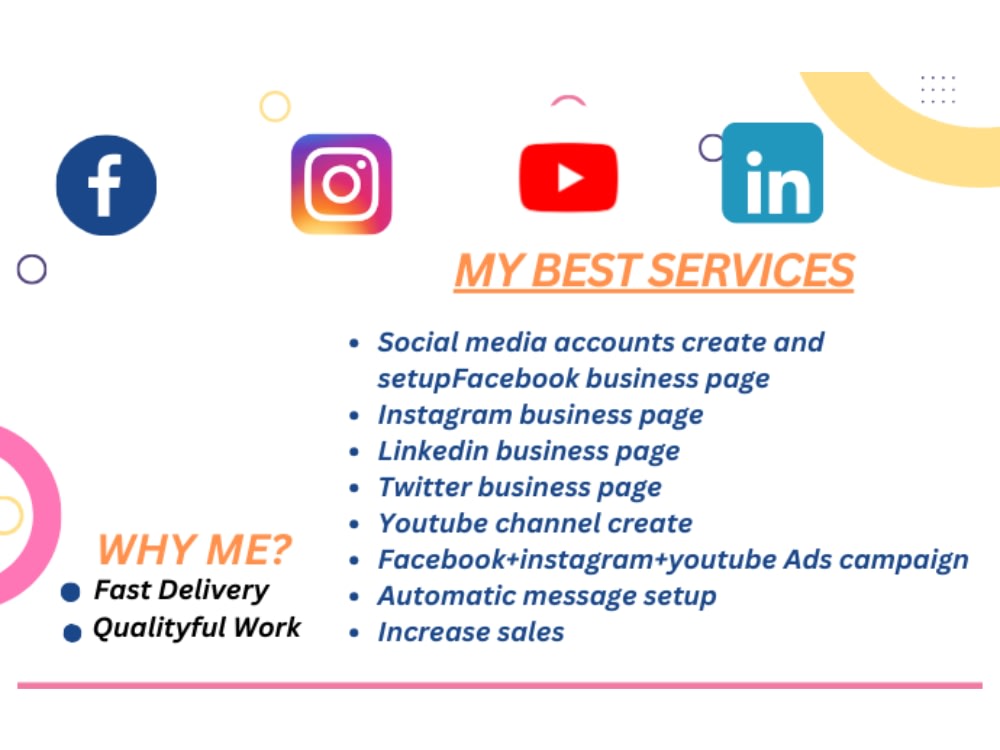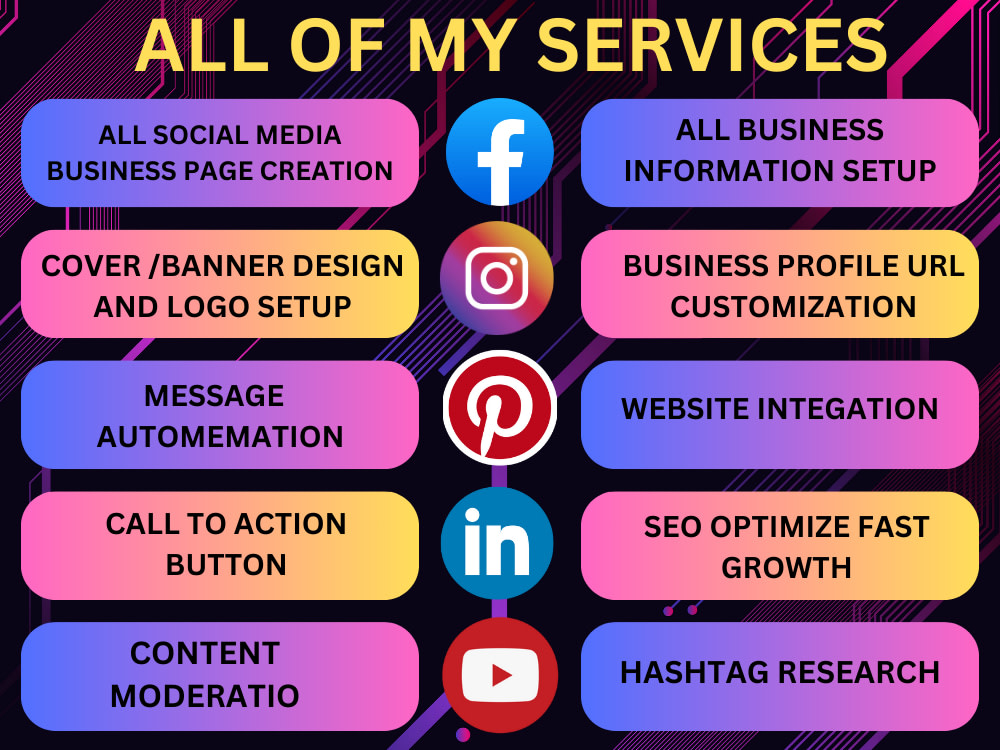
Curating Professional Social Feeds
Curating professional social feeds is more than just posting; it’s about crafting a compelling narrative of your expertise and brand. It’s about strategically showcasing your skills, connecting with potential collaborators, and building a reputation that resonates with your target audience. This journey involves careful planning, consistent execution, and a keen eye for engaging content. Get ready to transform your online presence!
From defining your professional brand across platforms like LinkedIn, Twitter, and Instagram, to creating a content calendar that keeps your feed fresh and relevant, we’ll explore every facet of building a successful online presence. We’ll delve into the art of curating external content ethically, engaging authentically with your audience, and leveraging the power of visuals to make your message unforgettable.
Ultimately, this guide will empower you to take control of your professional narrative and make a lasting impression in the digital world.
Defining Professional Social Media Presence: Curating Professional Social Feeds
In today’s interconnected world, a strong professional social media presence is no longer a luxury but a necessity. It’s the digital extension of your professional brand, shaping how potential employers, clients, and collaborators perceive you. A well-curated online profile showcases your skills, experience, and personality, ultimately influencing opportunities and career progression.A strong professional online presence is characterized by several key elements.
It’s about more than just having profiles; it’s about actively managing them to project a consistent, positive, and credible image. This involves thoughtfully selecting content that aligns with your professional goals, engaging with relevant communities, and maintaining a professional tone in all interactions. A polished and updated profile, showcasing achievements and skills, is crucial. Furthermore, actively responding to comments and messages demonstrates engagement and professionalism.
Professional Branding Strategies Across Platforms
Different platforms serve different purposes, requiring tailored approaches to personal branding. LinkedIn, for instance, is primarily a professional networking site. Therefore, your LinkedIn profile should focus on showcasing your work experience, skills, and endorsements. It’s a place for formal professional networking and showcasing your expertise through articles and posts related to your field. In contrast, Twitter allows for more informal engagement, enabling you to share thoughts, insights, and participate in industry conversations.
It’s a platform ideal for building your thought leadership and establishing yourself as a knowledgeable voice in your area. Instagram, with its visual focus, is better suited for showcasing projects, accomplishments, or aspects of your professional life through high-quality images and videos. It’s a space for demonstrating creativity and visually representing your skills, particularly valuable for creative fields. Consistency across these platforms, while maintaining platform-specific nuances, is key to building a cohesive brand.
The Importance of Consistent Messaging and Visual Style
Consistency is paramount in establishing a credible and recognizable professional brand. This encompasses maintaining a uniform tone of voice across all platforms. Imagine a LinkedIn profile brimming with formal language contrasted by a Twitter feed filled with informal slang – this creates a jarring and unprofessional impression. Similarly, a consistent visual style, including color palettes, fonts, and image filters (especially on visually driven platforms like Instagram), reinforces brand recognition and professionalism.
Think of it like a company logo; it needs to be recognizable and consistent across all marketing materials. A cohesive visual identity translates to a professional and trustworthy online presence.
The Potential Impact of Inconsistent or Unprofessional Online Content
The consequences of inconsistent or unprofessional online content can be significant. Inappropriate posts, grammatical errors, or a lack of engagement can damage your professional reputation. Potential employers or clients might perceive you as unreliable or unprofessional, leading to missed opportunities. Furthermore, inconsistent messaging can confuse your audience, hindering the development of a strong personal brand. For example, sharing controversial opinions or engaging in online arguments can alienate potential collaborators.
In short, maintaining a consistent and professional online presence is crucial for career success in today’s digital landscape. The impact of a negative online presence can be long-lasting and difficult to repair.
Curating Content from External Sources

Source: cloudinary.com
Sharing content from other sources can significantly boost your professional social media presence, offering diverse perspectives and enriching your audience’s experience. However, this practice necessitates a keen awareness of ethical considerations and a commitment to proper attribution. Successfully curating external content requires careful selection, responsible crediting, and seamless integration to maintain a consistent and professional online image.
Ethical considerations are paramount when sharing external content. Presenting someone else’s work as your own is plagiarism, a serious breach of professional ethics that can damage your reputation irreparably. Furthermore, using content without permission, even if properly attributed, can infringe on copyright laws and lead to legal repercussions. Always respect the intellectual property rights of others. Consider the context and potential impact of the content you share; ensure it aligns with your brand’s values and won’t cause offense or misrepresentation.
Proper Attribution and Crediting
Giving proper credit to original creators is crucial for maintaining ethical standards and building trust with your audience. Failing to do so undermines your credibility and can damage your professional reputation. Proper attribution not only avoids legal issues but also demonstrates respect for the creators’ work and fosters positive relationships within your professional network.
A comprehensive attribution should include:
- The author’s name or the organization’s name.
- A link to the original source.
- A brief description of the source, if necessary (e.g., “as reported by…”).
- A statement indicating that you are sharing their content (e.g., “Shared with permission,” “Via [Source Name]”).
For example, if you share an article from the Harvard Business Review, you might write: “This insightful article from the Harvard Business Review, [link to article], discusses the importance of [brief description]. Shared with permission.”
Identifying High-Quality, Relevant Content
The effectiveness of your curated content hinges on its quality and relevance to your audience. Simply sharing anything you find interesting is insufficient. The selection process must be strategic and purposeful. Consider the following criteria:
- Authority: Is the source reputable and trustworthy? Does it come from a recognized expert or organization?
- Accuracy: Is the information factually correct and supported by evidence? Be wary of misinformation or biased sources.
- Relevance: Does the content directly relate to your industry, expertise, or target audience’s interests? Does it add value to their experience?
- Engagement: Does the content have the potential to spark discussion, generate insights, or offer practical solutions? Look for content that’s visually appealing or uses compelling storytelling techniques.
Seamless Integration of External Content, Curating professional social feeds
Once you’ve identified high-quality, relevant content, integrating it seamlessly into your professional feed is key to maintaining a cohesive and professional brand image. Avoid jarring transitions or abrupt shifts in tone. Contextualize the shared content by briefly explaining its relevance to your audience and your overall message. Consider the visual appeal; use visually appealing graphics or images to enhance the presentation.
For instance, if sharing a blog post, write a concise introduction highlighting its key takeaways and why it’s valuable to your followers before including the link. If sharing a video, provide a short summary and your own thoughts or observations in the caption. This approach ensures a smooth integration and enhances the overall user experience.
Engaging with Your Audience
Building a strong professional presence on social media isn’t just about sharing content; it’s about fostering genuine connections with your audience. Active engagement is key to building trust, increasing brand awareness, and ultimately, achieving your professional goals. Responding effectively to comments, participating in relevant conversations, and consistently monitoring your performance are crucial aspects of this process.A well-defined engagement strategy is essential for maximizing your social media impact.
This involves proactively seeking out opportunities to interact with your audience and responding thoughtfully to both positive and negative feedback. Consistent and authentic engagement will cultivate a loyal following and enhance your professional reputation.
Responding to Comments
A robust response strategy is vital for managing your online reputation. For positive comments, a simple “thank you” often suffices, but consider adding a personalized touch to show genuine appreciation. For example, if someone praises a specific project, mention that project by name and reiterate your appreciation for their kind words. Negative comments require a more nuanced approach.
Acknowledge the concern, empathize with the commenter’s perspective, and offer a solution or explanation where possible. Avoid getting defensive; instead, focus on addressing the issue professionally and respectfully. For instance, if someone criticizes a product feature, you might respond with something like, “We appreciate your feedback on the [feature name]. We’re actively working on improvements based on user suggestions, and your comment will be taken into consideration for future updates.” Ignoring negative comments can be damaging, while responding poorly can escalate the situation.
A calm, measured response demonstrates professionalism and commitment to customer satisfaction.
Participating in Online Discussions
Actively participating in relevant online discussions is a powerful way to increase visibility and establish yourself as a thought leader. Identify industry-related hashtags and s, and engage in conversations where you can offer valuable insights or contribute to the discussion. Sharing relevant articles, offering expert opinions, and asking thought-provoking questions are all effective ways to participate meaningfully. For example, if you’re a marketing professional, participating in discussions about the latest trends or social media marketing strategies can help you build your reputation and network with other professionals in your field.
Remember to keep your contributions relevant and avoid self-promotion; focus on adding value to the conversation.
Effective Engagement Tactics
Several tactics can significantly enhance your engagement and build relationships. Running polls and quizzes can encourage interaction and gather valuable data about your audience’s preferences. Asking open-ended questions in your posts prompts thoughtful responses and fosters dialogue. Responding to mentions and direct messages promptly shows your audience that you value their input. Collaborating with other professionals in your industry through joint webinars or guest posts expands your reach and exposes you to new audiences.
Finally, sharing user-generated content, such as testimonials or reviews, builds social proof and demonstrates authenticity. These methods work together to create a dynamic and engaging online presence.
Monitoring and Adapting Your Strategy
Regular monitoring of your social media performance is crucial for understanding what resonates with your audience and what doesn’t. Utilize analytics tools provided by each platform to track metrics like engagement rate, reach, and follower growth. Pay attention to which posts perform well and why. Are certain types of content consistently more engaging? Which hashtags are driving the most traffic?
Analyze this data to identify trends and refine your content strategy accordingly. For instance, if you notice that posts with visuals receive significantly more engagement than text-only posts, you might increase the number of images and videos you share. Adapting your strategy based on data-driven insights ensures that your efforts are focused on what works best for your target audience, leading to more effective engagement and a stronger online presence.
Utilizing Visual Elements
In the bustling world of professional social media, captivating visuals are no longer a luxury—they’re a necessity. High-quality images and videos significantly boost engagement, helping your brand stand out from the noise and leave a lasting impression on your audience. Think of it as the difference between reading a plain text document and reading a beautifully illustrated book; the latter is far more memorable and engaging.Visuals significantly impact how users perceive and interact with your content.
A well-chosen image can evoke emotion, communicate complex information quickly, and improve overall comprehension. In contrast, low-quality or irrelevant visuals can detract from your message, leading to lower engagement and a diluted brand image. This section will explore how to leverage the power of visuals to enhance your professional social media presence.
Effective Visual Styles for Different Professional Fields
The ideal visual style varies greatly depending on your industry and target audience. A tech startup might favor clean, minimalist designs with bold geometric shapes and vibrant color palettes, reflecting innovation and modernity. In contrast, a law firm might opt for a more sophisticated and traditional aesthetic, using muted colors, elegant typography, and high-quality photography to convey trustworthiness and authority.
A design agency, naturally, might showcase its creative flair through diverse and experimental visual styles, reflecting its own capabilities. Consider your brand identity and tailor your visuals accordingly.
Using Visuals to Tell a Story or Convey Key Information Efficiently
Visuals are incredibly effective storytelling tools. Instead of lengthy text descriptions, a compelling image or short video can convey complex information concisely and memorably. For example, an infographic can break down intricate data into easily digestible chunks, while a short video can showcase a product’s functionality or a company’s culture. Remember the principle of “show, don’t tell.” Use visuals to demonstrate your points rather than simply stating them.
A single impactful image can often be worth a thousand words.
Creating Visually Appealing Social Media Graphics: A Step-by-Step Guide
Creating professional-looking graphics doesn’t require advanced design software. Many user-friendly tools are available, offering pre-designed templates and intuitive editing capabilities. Here’s a step-by-step guide:
- Choose your design tool: Options range from free tools like Canva to more advanced software like Adobe Photoshop or Illustrator. Select a tool that aligns with your skill level and design needs.
- Select a template or start from scratch: Many tools offer pre-designed templates tailored to various social media platforms. Alternatively, you can create a design from scratch, exercising more creative control.
- Choose your visuals: Select high-quality images or videos relevant to your message. Ensure they are appropriately sized and optimized for the platform.
- Add text: Use clear, concise, and impactful text. Choose fonts that are easy to read and reflect your brand’s personality.
- Maintain consistency: Use a consistent color palette, font style, and overall design aesthetic across all your social media platforms to create a cohesive brand identity.
- Review and refine: Before posting, review your design carefully, ensuring it’s visually appealing, error-free, and aligns with your brand’s message.
Image Format Comparison
Choosing the right image format is crucial for optimizing your visuals for web use. Here’s a comparison of common formats:
| Image Format | File Size | Quality | Transparency | Best Use Cases |
|---|---|---|---|---|
| JPEG | Small | Good | No | Photographs, images with smooth gradients |
| PNG | Larger | Excellent | Yes | Logos, graphics with sharp lines, images requiring transparency |
| GIF | Small to Medium | Good (limited color palette) | No (some variations support transparency) | Animated images, short looping videos |
Measuring and Analyzing Performance

Source: cloudinary.com
Understanding how your professional social media presence performs is crucial for refining your strategy and maximizing its impact. Without consistent measurement and analysis, you’re essentially operating in the dark, unable to determine what’s working and what needs improvement. This section will explore key performance indicators (KPIs), analytics tools, data interpretation, and goal setting for optimizing your social media efforts.
Curating a professional social media presence is key, and it’s more than just posting pretty pictures. To really boost your reach, consider expanding your video content strategy; check out this awesome guide on getting it on with YouTube for some killer tips. Then, integrate your YouTube success back into your other social platforms for a cohesive and impactful professional brand.
Effective social media management relies heavily on data-driven decision-making. By tracking the right metrics and analyzing the results, you can gain valuable insights into audience engagement, content effectiveness, and overall campaign success. This allows for iterative improvements, leading to a stronger and more impactful online presence.
Key Performance Indicators (KPIs) for Professional Social Media Accounts
Choosing the right KPIs depends on your specific goals. However, some universally valuable metrics provide a solid foundation for assessing performance. These metrics offer a comprehensive overview of your social media success, enabling you to identify areas for improvement and celebrate your wins.
- Reach: The total number of unique individuals who saw your content. This indicates the breadth of your audience exposure.
- Engagement: This encompasses likes, comments, shares, and other interactions. High engagement suggests your content resonates with your audience.
- Website Clicks: If your goal is to drive traffic to your website, monitoring clicks from your social media posts is vital.
- Lead Generation: Tracks the number of leads generated through your social media efforts. This is particularly important for business accounts.
- Brand Mentions: Monitoring mentions of your brand, both positive and negative, helps understand your brand perception and address any concerns.
Social Media Analytics Tools
Numerous platforms offer robust analytics capabilities. Selecting the right tool depends on your specific needs and budget. Each tool provides unique features and levels of detail, enabling you to tailor your analysis to your strategic objectives.
| Tool | Features | Strengths | Weaknesses |
|---|---|---|---|
| Native Platform Analytics (e.g., Facebook Insights, Twitter Analytics) | Free, integrated with the platform, basic metrics | Easy access, readily available data | Limited advanced features, platform-specific |
| Google Analytics | Website traffic tracking, integrates with social media campaigns | Comprehensive website analytics, valuable for conversion tracking | Requires technical setup, not solely focused on social media |
| Hootsuite Insights | Social media listening, competitor analysis, advanced reporting | Powerful features, comprehensive overview | Subscription required, can be complex for beginners |
Interpreting Social Media Analytics Data
Raw data is meaningless without interpretation. Analyzing your KPIs reveals trends and patterns that inform future content strategy. Understanding these patterns allows for informed decisions that drive improved results.
For example, if engagement is low on a particular type of content, you might consider adjusting your approach. Conversely, high engagement suggests a successful formula to replicate and refine.
Analyzing data across different platforms helps identify consistent strengths and weaknesses. This holistic view allows for a more nuanced understanding of your overall social media performance and provides valuable insights for strategic adjustments.
Setting Realistic Goals and Tracking Progress
Before diving into analytics, establish clear, measurable, achievable, relevant, and time-bound (SMART) goals. This ensures your efforts are focused and your progress is easily tracked. These goals should be directly tied to your overall business objectives.
For instance, a goal might be to increase website traffic from LinkedIn by 20% in three months. Regularly monitor your KPIs against these goals to assess progress and make necessary adjustments. Regular review and adaptation are key to continuous improvement.
Using a spreadsheet or project management tool to track progress against your goals can help visualize your performance and identify areas needing attention. This structured approach ensures accountability and provides a clear roadmap for achieving your objectives.
Final Thoughts
Mastering the art of curating professional social feeds isn’t a destination, but a continuous journey of refinement and adaptation. By consistently applying the strategies and insights shared here – from strategic content planning and ethical curation to insightful analytics and audience engagement – you’ll not only elevate your professional brand but also foster meaningful connections that can significantly benefit your career.
So, embrace the challenge, experiment with different approaches, and watch your professional online presence flourish!
Commonly Asked Questions
What are the best tools for scheduling social media posts?
Popular options include Buffer, Hootsuite, and Later, each offering different features and pricing plans. Choose one that aligns with your needs and budget.
How often should I post on each platform?
There’s no one-size-fits-all answer. Experiment to find the optimal frequency for each platform based on your audience’s engagement and your content strategy. Consistency is key, though.
How do I deal with negative comments?
Respond professionally and empathetically, acknowledging the concern. If the comment is inappropriate, you may choose to delete it. Focus on addressing valid criticism constructively.
What are some examples of engaging content formats?
Consider using a mix of text posts, images, videos, infographics, polls, and stories. Experiment to see what resonates best with your audience.





